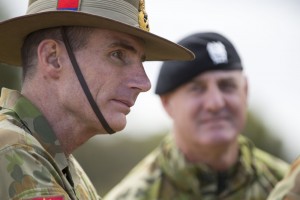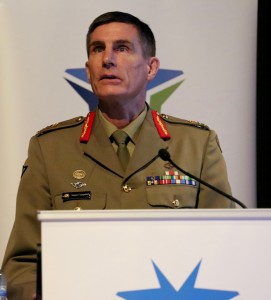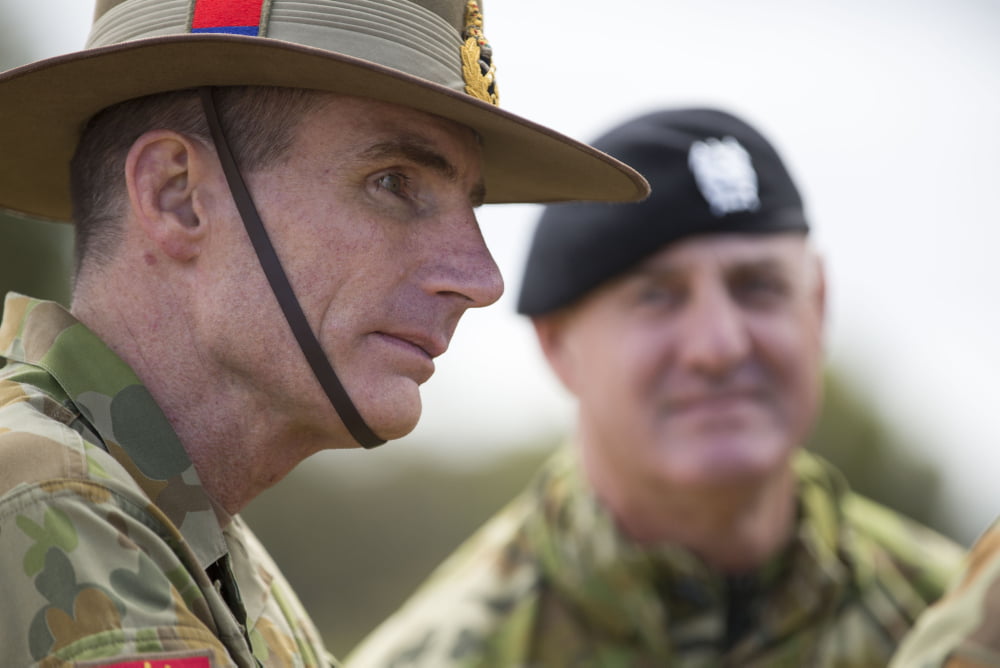2016-04-20 By Robbin Laird
The well-regarded chief of the Australian Army, Lt. General Angus Campbell, weighed in on the future of the Australian Army in the joint environment in two presentations recently in Canberra.
The first was during the RAAF’s 2016 Air Power Conference and the second was during the Williams Foundation seminar on new approaches to air-ground integration.
For the Chief of Staff of the Army, it about having the “right effect, at the right place and the right time” for the joint ground force, whereby he clearly meant the joint maneuver force.
He underscored that the core challenge was the co-evolution of the ground, air and naval forces to deliver a timely capability against the tasks or missions in the area of interest.

He argued that the technology was outpacing our concepts of operations and argued that if Wellington came back to see operations in World War II, he would see a decisive difference in how the ground forces operated in the combined arms context.
But that if one would look from World II to now, although the technology had changed dramatically, the differences in concepts of operations are not as significant as the changes in technology would allow.
He argued that we needed to become significantly more innovative in our conceptual thinking to find ways to better leverage technology and to prepare to better use advancing technologies and capabilities.
Here he saw two great opportunities.
The first is to break the hold of incrementalism and imagine significant disruption driven by dynamics of change being introduced in the man-machine relationship. He argued, in effect, that we need to think from the future back into our current thinking to shape a better way ahead in the joint arena.
The second is to move from the very divergent data, communications and related systems to shape more convergent efforts, in effect, to shape more effective co-evolution of the key elements of combat power.
And to shape a more effective joint land force it is crucial to determine where the key capabilities might most effectively be placed, throughout the multi-dimensional combat force.

“In some cases, we are looking for the touch points where best to evolve a capability,” by which he meant that rather than looking for organic upgrades to each platform, the challenge was to look at the joint force and determine which elements of the evolving capability can perform optimal tasks within the overall force capability.
He argued for the increasingly important role of the small, mobile unit within the ground forces, which can leverage the joint assets and, in turn, can contribute to the other joint forces in shaping more effective fire or situational awareness solutions.
He argued that the evolution of software was a key element in the joint space, and that ways needed to be found to more rapidly evolve software in the joint space to provide for the joint effect.
And the “T” or transformation factor was crucial. Rapidity of operations was a key element of the way ahead, and it was important for the joint land force to be able to function more rapidly, with greater effect and in a variety of situations in which connectivity would be degraded.
“The small group needs to train to operate in degraded situations and to operate with as great a capability to not be detected as possible.”
The integration of air, naval and ground power was crucial to the way ahead, and the Australian Army’s battle management lab had RAAF officers involved on the ground floor shaping the way ahead.
Clearly, for the Australian Army chief, the Army is an embedded joint force, and with the new RAAF and Royal Australian Navy capabilities coming on line, would become more so.
Meanwhile back Inside the Beltway a discussion on Breaking Defense seemed in one instance to reflect the thinking Down Under.
According to Lt. General Deptula and Doug Birkey’s characterization:
“Army Lt. Gen. H.R. McMaster issued a warning April 5 to the Senate Armed Services Airland subcommittee saying that the service will be “…outranged and outgunned by many potential adversaries in the future….”
This statement garnered much attention in the media, but it artificially assesses Army capabilities in a stovepipe and fails to account for the realities of joint power projection.
Bottom line: the individual services don’t fight wars, the Combatant Commanders do by assembling an optimized mix of forces from each of the services to execute a given strategy to attain a desired set of conditions against a specific threat.”
The authors went to argue that “To put it simply, a soldier on the ground working in coordination with a B-1, B-52, the assets of a carrier air wing, or standoff munitions from a ship is afforded immense range and overwhelming firepower.
Those capabilities assembled as a joint task force create a synergy greater than any single service component alone. In short, the combatant commands will never allow the US Army to be “outranged and outgunned.”
In Australia, the argument by Deptula and Birkey is simply ground truth from which the Australian Army is building its future.
And the Williams Foundation seminar on new approaches to air-ground integration simply builds from this point:
Air forces need to be capable of delivering air and space power effects to support conventional and special operations in the land domain. Air-Land integration is one of the most important capabilities for successful joint operations.
The last decade has seen a significant shift in how airpower has supported ground operations.
With the introduction of systems like Rover, the ability of airpower to provide precision strike in conjunction with ground forces saw a significant change in dramatic effects possible from a wide variety of air platforms.
Precision air dropping in support of outposts or moving forces introduced new capabilities of support.
This template of air ground integration is really focused on air operating in conjunction with ground whereas with the shift in the global situation, a much wider set of situations are emerging whereby the air-ground integration approach will become much wider in character, and the ability to insert force rapidly, as a precision strike capability, and to be withdrawn will be a key tool in the toolbox for decision makers.
Fifth generation enabled operations will see a shift to a distributed C2 approach which will clearly change the nature of the ground-to air command system, and with the ability of fifth generation systems to generate horizontal communications among air assets outside the boundaries of a classic AWACs directed system, the change in C2 will be very wide ranging.”
In other words, the co-evolution of the services was crucial in shaping a more effective force, and one capable of operating more effectively in a more timely manner.
Note: For the presentation of the Chief of Staff of the Australian Army’s presentation to the RAAF Airpower Conference 2016, you can listen here:
https://app.box.com/s/auj2inov49kzoxgb4mw2dm8k6jd3y8fz


